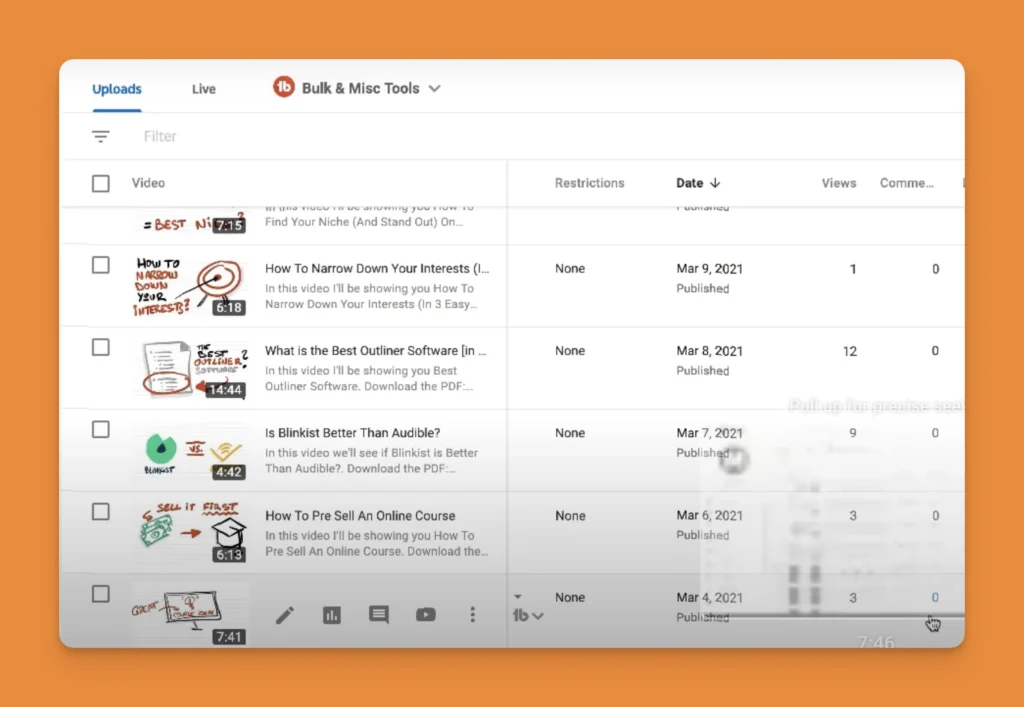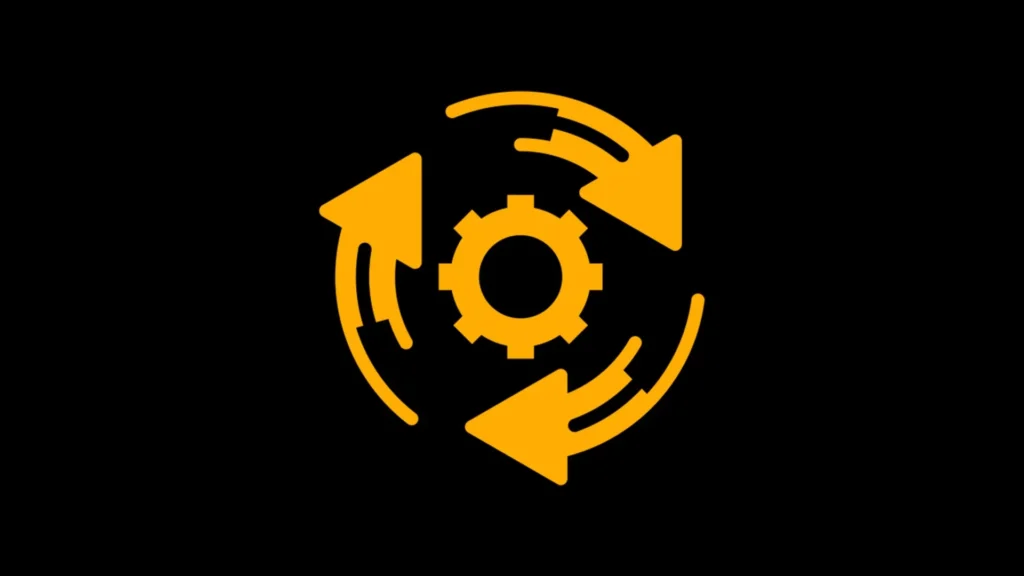So you’re wondering if repurposing content is actually worth your time?
You’re right to question it.
With so many “must-do” marketing strategies out there, it’s hard to know which ones actually deliver results and which are just busy work.
I asked myself the same question back in 2020 when my YouTube channel was stuck at a plateau.
After 3 months of publishing 6 videos a week, I was sick and tired of getting 11 views per video:

I found that my content was good (LOL, we all do right?)…
But somehow I wasn’t able to get the eyeballs.
That’s when I made a decision that transformed everything: I took my note-taking articles from YouTube and started publishing that same information on Medium.
The results?

My audience grew 5x faster than before, and I started getting client inquiries from people who’d never even seen my YouTube content.
Here’s why repurposing content might be the best content strategy for you this year:
My content repurposing breakthrough
Let me share what happened back in 2020-2021.
I had launched a YouTube channel focused on productivity and note-taking systems.
Despite putting out consistent content, growth was painfully slow. I was investing hours into each video but saw minimal return.
The frustration was real. I was creating what I thought was valuable content, but it wasn’t reaching enough people.
Then I had a realization: what if the problem wasn’t my content, but the platform?
I started a simple experiment. I took the scripts and ideas from my YouTube videos about note-taking systems and repurposed them into written articles on Medium—same information, different format.
Within 60 days, everything changed:
- My Medium articles started getting thousands of views
- My email list grew faster in one month than it had in the previous six
- People began reaching out for consulting work based on my written content
- And surprisingly, my YouTube channel started growing faster too as people discovered me through Medium
The lesson was clear: My ideal audience wanted my content, but many of them preferred reading to watching videos.
By repurposing content across platforms, I wasn’t just reaching more people—I was reaching the RIGHT people in the format THEY preferred.
Why repurposing content works so well
Based on my experience and what I’ve seen work for hundreds of other experts, here’s why content repurposing delivers such powerful results:
1. You reach different audience segments with different preferences
Not everyone consumes content the same way. Some people are readers, others are listeners, and others are watchers.
When I repurposed my YouTube content to Medium, I discovered an entire audience of productivity enthusiasts who preferred reading to watching videos. They would never have found me if I’d stayed exclusively on YouTube.
The data supports this: Research shows that:
- 65% of people are visual learners
- 30% are auditory learners
- 5% are kinesthetic learners
By repurposing content across formats, you’re ensuring your valuable insights reach people regardless of their preferred learning style.
2. You maximize ROI on your content creation efforts
Creating high-quality content takes significant time and mental energy. When you only publish it in one format on one platform, you’re severely limiting its potential reach and impact.
Before I started repurposing, I would spend 8-10 hours on a YouTube video that might reach 500 people. By spending an additional 1-2 hours repurposing that content for Medium, I could reach another 2,000-3,000 people.
The math is simple:
- Original content: 10 hours for 500 views = 50 views per hour of work
- With repurposing: 12 hours for 3,000+ views = 250 views per hour of work
That’s a 5x improvement in efficiency just by adding repurposing to my workflow.
3. You strengthen your core message through repetition
When I was only posting on YouTube, I felt pressure to constantly create new topics to avoid repeating myself. This led to content that lacked focus and depth.
Once I started repurposing across platforms, I realized the power of reinforcing my core messages. Most people needed to hear my ideas multiple times, in different contexts, before they fully resonated.
The marketing rule of 7 exists for a reason: people typically need to encounter your message at least seven times before taking action. Repurposing accelerates this process by exposing your audience to consistent messaging across different touchpoints.
4. You save massive amounts of time (once you have a system)
Let’s be honest: creating original content from scratch is time-consuming. Research, outlining, drafting, editing, publishing—it all adds up quickly.
When I was creating separate content for YouTube and my blog, I was spending 20+ hours a week on content creation. After implementing a repurposing workflow, I cut that down to 12 hours while producing more content overall.
The key was developing a system:
- Create pillar content (a detailed YouTube video)
- Extract the audio for a podcast episode
- Turn the script into a blog post
- Break down key points for social media
- Create quote graphics from memorable lines
Instead of creating 5 separate pieces of content, I was creating 1 piece and transforming it into 5 formats—saving nearly 60% of my time.
5. You discover what formats resonate best with your audience
One of the unexpected benefits of repurposing was how it revealed where my content performed best.
When I started repurposing, I assumed my YouTube videos were my strongest format. The data told a different story: my Medium articles consistently outperformed my videos in terms of engagement and conversion.
This insight led me to shift my strategy—focusing more energy on written content while maintaining my video presence—resulting in faster growth and better results.
Repurposing gives you valuable data about where your message lands most effectively, allowing you to refine your content strategy based on real performance metrics rather than assumptions.
Is repurposing right for YOU?
While repurposing has been transformative for my business, it’s not automatically the right strategy for everyone. Here’s a quick self-assessment:
Repurposing is likely a good idea if:
- You already create content but feel you’re not getting enough reach
- You find yourself stretched thin trying to create original content for multiple platforms
- Your expertise could be valuable across different formats (written, audio, video)
- You have a core message or methodology that can be explained from multiple angles
- You’re looking to scale your impact without scaling your work hours
Repurposing might not be ideal if:
- You’re just starting out and haven’t created any content yet
- Your content is highly visual or experiential and doesn’t translate well to other formats
- You don’t have a clear expertise or message to share
- You enjoy the creative process of making entirely new content for each platform
How to start repurposing content effectively
If you’re convinced repurposing is worth trying (it is!), here’s how to get started:
1. Audit your existing content
Before creating anything new, look at what you already have. You probably have more reusable content than you realize. I discovered I had over 50 YouTube videos that could be repurposed into written content.
Create a spreadsheet listing all your existing content with columns for:
- Title/Topic
- Original format
- Potential repurposing formats
- Evergreen or time-sensitive
- Performance metrics
2. Start with your highest-performing content
Don’t try to repurpose everything at once. Begin with your best-performing pieces—they’ve already proven their value to your audience.
When I started, I repurposed my top 5 YouTube videos into Medium articles first. Their success gave me the confidence and momentum to continue the process with other content.
3. Create a simple repurposing workflow
Develop a repeatable process for each type of repurposing you’ll do regularly. For example, here’s my YouTube-to-Medium workflow:
- Extract YouTube script from my notes
- Remove verbal transitions and filler phrases
- Add proper formatting for written content (headers, bullet points)
- Create a compelling headline and subheads
- Add 2-3 relevant images
- Include a bio with call-to-action
Having this checklist makes repurposing faster and ensures consistent quality.
4. Use the right tools
The right tools can dramatically reduce the time it takes to repurpose content. Some essentials:
- Transcription tools (Descript, Otter.ai)
- Content management system (Notion, ClickUp)
- Scheduling tools (Buffer, Hootsuite)
- Design tools (Canva)
- Automation platforms (Zapier, Make)
5. Track results and optimize
Create a simple tracking system to measure how your repurposed content performs compared to the original. This data will help you refine your approach over time.
When I tracked my results, I discovered that my Medium articles actually performed 3x better when I added custom graphics rather than screenshots from my videos—a small tweak that significantly improved outcomes.
Final thoughts: Is repurposing content a good idea?
Based on my personal experience taking YouTube content to Medium and seeing exponential growth, along with working with dozens of other experts who’ve had similar results, I can confidently say:
Yes, repurposing content isn’t just a good idea—it’s one of the smartest content strategies for experts who want to maximize their impact without burning out.
The beauty of repurposing is that it allows you to be in multiple places at once without doing multiples times the work. It’s about working smarter, not harder.
As my story shows, sometimes the breakthrough doesn’t come from creating more content, but from getting your existing content in front of the right people in the format they prefer.
Ready to get started with content repurposing? Check out my comprehensive guide on How To Repurpose Content or learn the specific strategies I used to transform YouTube videos into written content.

